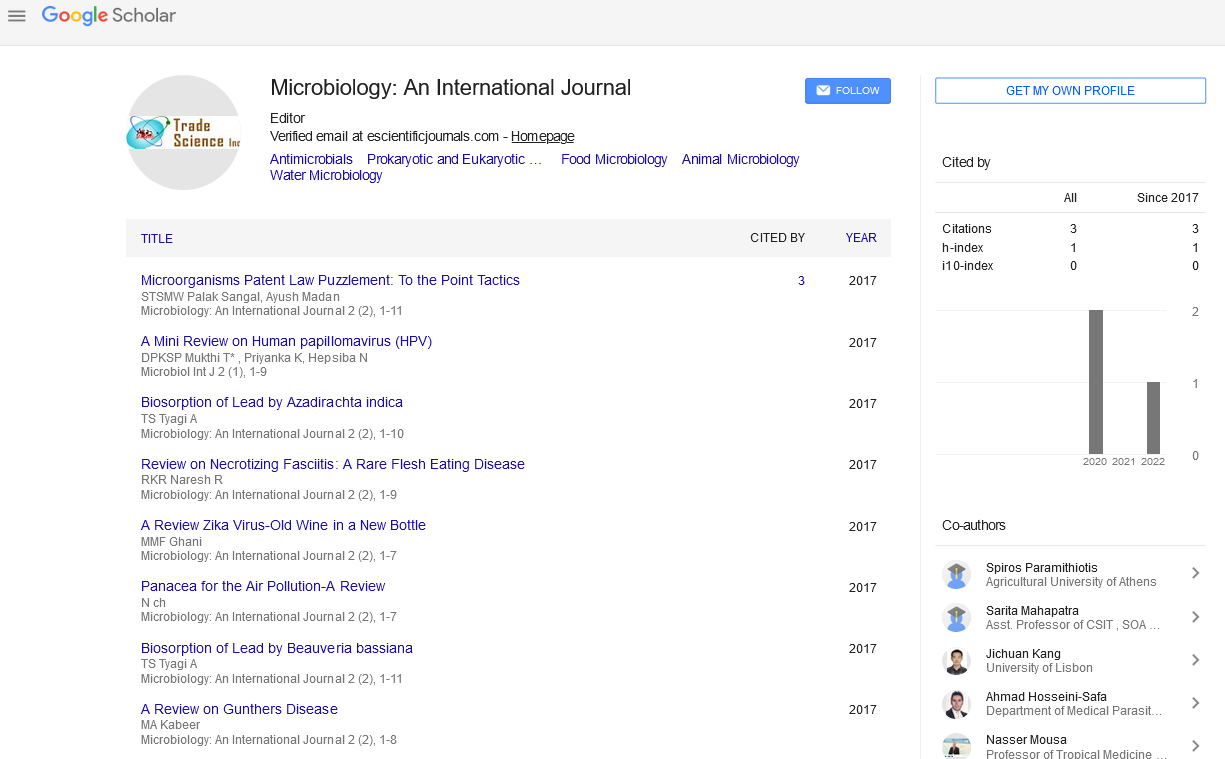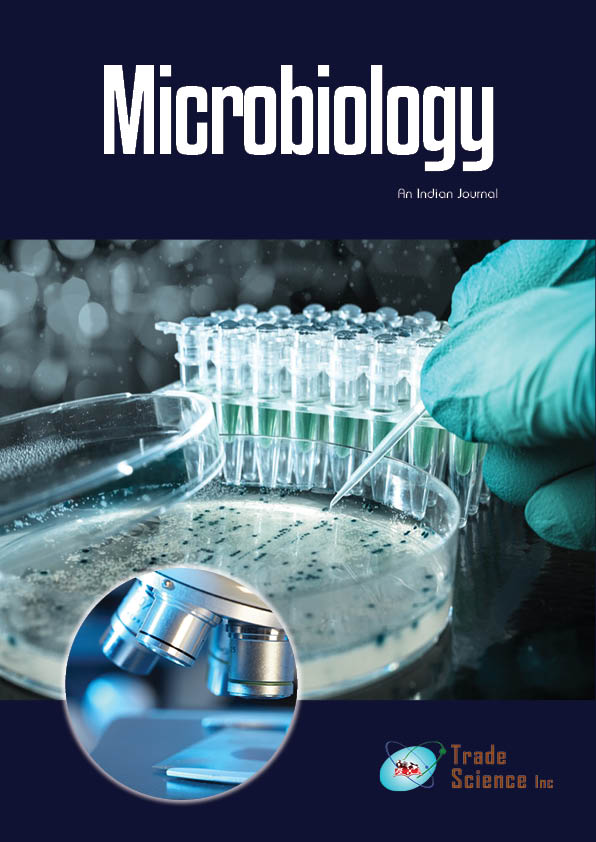Subspeciality Notes
, Volume: 3( 2)Microbial Metabarcoding highlights different Bacterial and Fungal Populations
- *Correspondence:
- Patra SS, MITS School of Biotechnology, Utkal University, Bhubaneswar, Odisha; E-mail: sudhansupatra18@gmail.com
Received: October 03, 2021; Accepted: October 18, 2021; Published: October 27, 2021
Citation: Patra SS. Microbial Metabarcoding highlights different Bacterial and Fungal Populations. Microbiol Int J. 3(2):127.
Abstract
Globalization has a significant impact on seed, fruit, and vegetable trade and mobility, resulting in a rise in economic losses due to the introduction of transboundary plant infections. Current diagnostic procedures are a helpful and precise tool for enacting surveillance regimens for certain organisms, but they are very targeted, whereas metabarcoding and shotgun metagenomics might be utilised to concurrently detect all known diseases as well as potentially novel ones. The goal of this review is to present the current state of high-throughput sequencing (HTS) diagnostics for fungal and bacterial plant pathogens, discuss the challenges that must be overcome, and provide guidance for the development of methods for detecting a small number of related taxa (specific surveillance) or all of the microorganisms present in a sample (general surveillance). HTS approaches, particularly metabarcoding, may be beneficial for monitoring soilborne, seedborne, and airborne diseases, as well as finding new pathogens and pinpointing outbreak origins. Metabarcoding and shotgun metagenomics still have a lot of room for improvement but this issue can be limited by carefully choosing primers and bioinformatic algorithms. The use of metagenomics to address crucial areas of plant pathogen identification and surveillance in plant material and commodities will be substantially accelerated thanks to advances in bioinformatics.
Keywords
Surveillance, Plant pathogens, Metabarcoding, Metagenomics, Detection.
Introduction
Plant diseases that cross international borders can have serious economic ramifications for local plant production and have a negative impact on global food security. Pre- and postharvest infections are estimated to be responsible for one-quarter of worldwide production potential. These losses have a profound influence on food security, quality, and safety, as well as the entire food supply chain, whether directly or indirectly. Feeding the world's population, which is expected to reach 9 billion by 2050, is a major challenge, will require a concentrated effort to keep food losses at a minimum [1]. Due to the problems provided by climate change, which are influencing plant health by changing interactions between host plants, pathogens, and the environment, the need to reduce crop losses has become more prominent. Crop yields were clearly reduced in a study done in the United States to assess future food production scenarios for the years 2060–199 [2]. The gradual adoption of sustainable farming practises, as well as the corresponding reduction in agricultural chemical inputs, such as pesticides, may make disease management more difficult. As a result, it is clear that effective diagnostic procedures are required to identify dangers to plant health in order to create and implement appropriate plant protection strategies. To certify exported commodities, examine imported products, undertake disease surveillance and monitoring, and implement pathogen containment programmes, rapid disease diagnosis technologies are required [3]. Metagenomic sequencing offers the ability to discover and monitor numerous, if not all, possible plant pathogens in a single investigation in this regard. However, due to a number of technological issues and constraints that need to be solved before metabarcoding and/or shotgun metagenomics can be used to diagnose bacterial and fungal plant diseases on a wide scale, the application of metagenomic sequencing is currently uncommon. An outstanding study with practical technical instructions for implementing high-throughput sequencing (HTS) in plant pathogen detection was recently published [4].
Conclusion
The use of high-throughput microbiome sequencing for diagnostic purposes has a lot of promise. It has a lot of potential for monitoring soilborne, seedborne, and airborne diseases, as well as identifying new pathogens and detecting the source of epidemics. Metabarcoding is the approach with the most potential uses in monitoring the presence of pathogens, owing to its low cost. It is especially useful for use in specialised surveillance programmes when the aim is a single genera of fungi or bacteria.
References
- Ghadge A, Wurtmann H, Seuring S. Managing climate change risks in global supply chains: A review and research agenda. Int. J. Prod. Res. 2020;58:44-64.
- Notomi T, Okayama H, Masubuchi H. et al. Loop-mediated isothermal amplification of DNA. Nucleic Acids Res. 2000;28:e63.
- Porter TM, Hajibabaei M. Scaling up: A guide to high-throughput genomic approaches for biodiversity analysis. Mol. Ecol. 2018;27:313-338.
- Scibetta S, Schena L, Chimento A. et al. A molecular method to assess Phytophthora diversity in environmental samples. J. Microbiol. Methods 2012;88:356-368.

